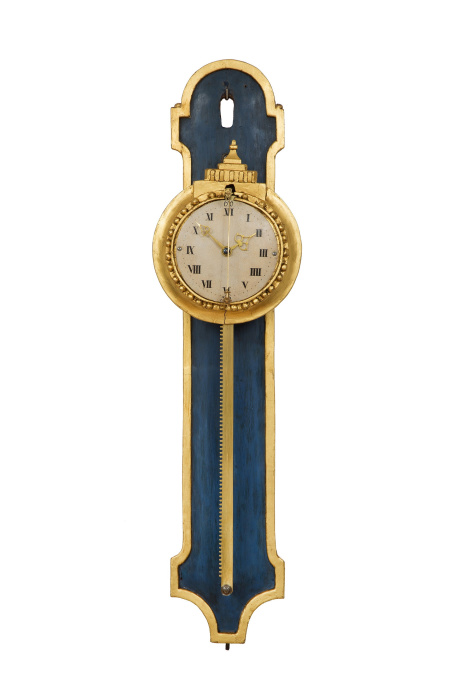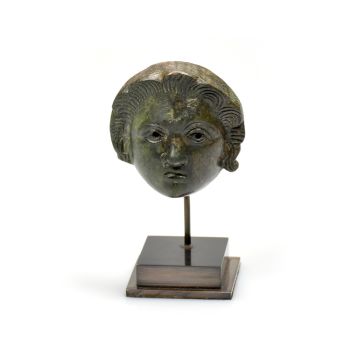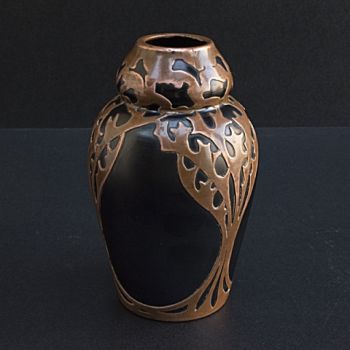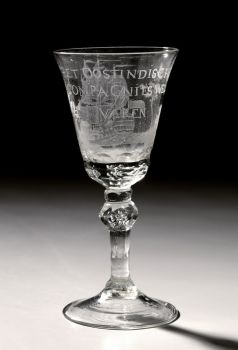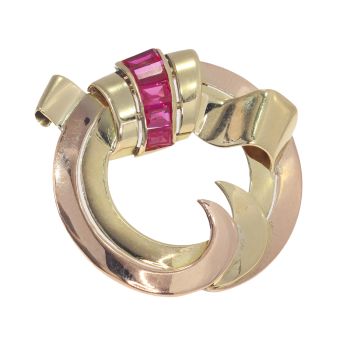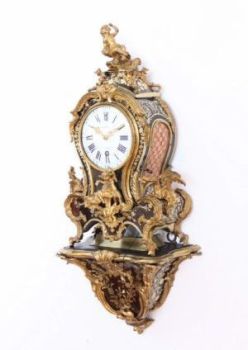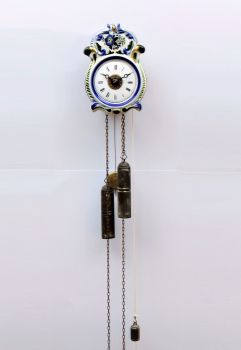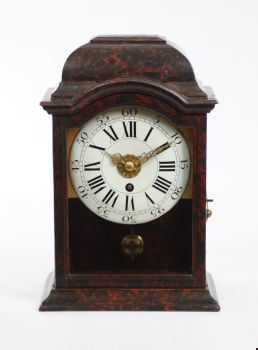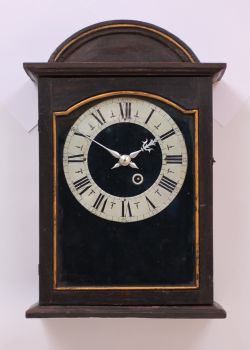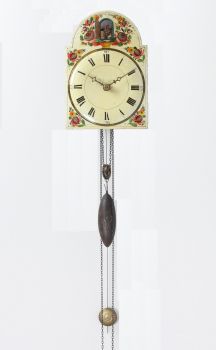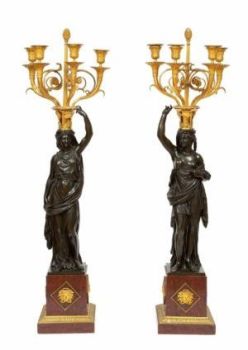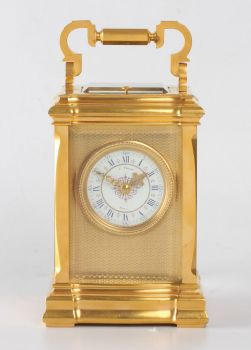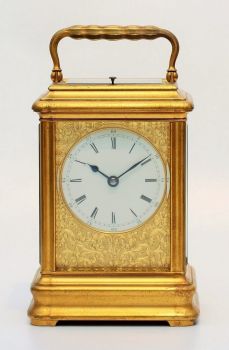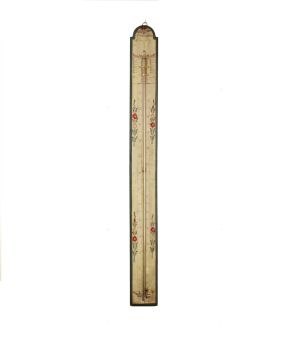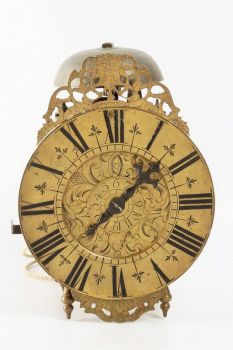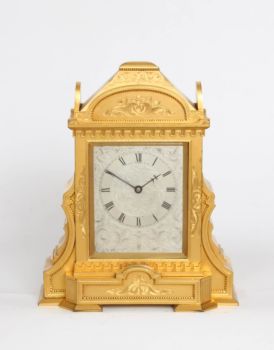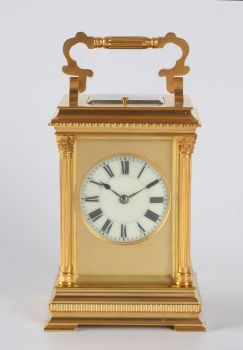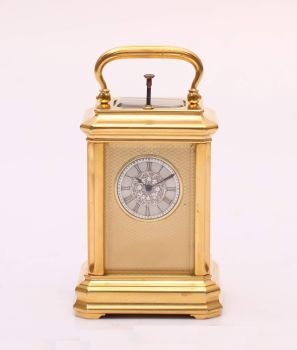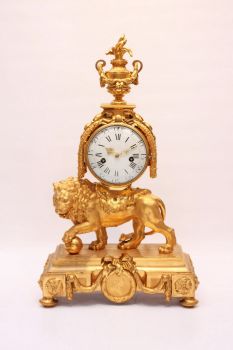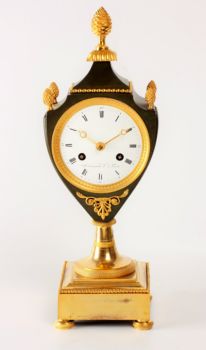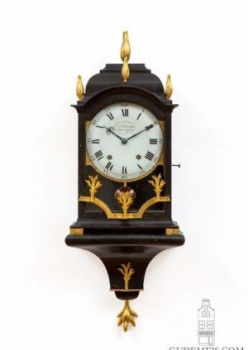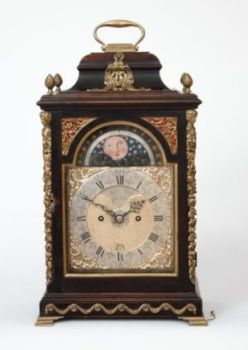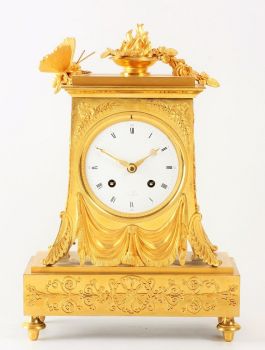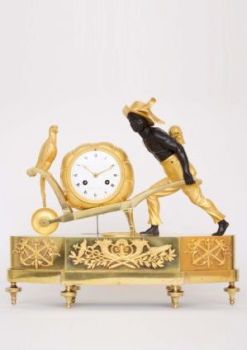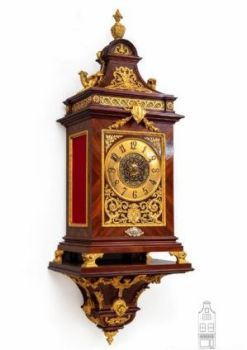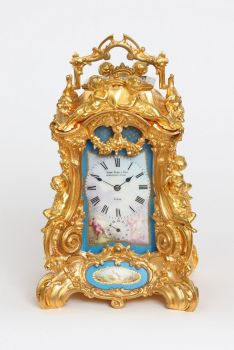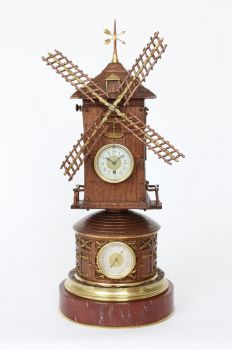A South German Louis XVI polychrome and parcel gilt rack wall timepiece, circa 1780 1780
Unknown artist
63.50 ⨯ 12 ⨯ 11 cm
€ 16.000
Gude & Meis Antique clocks and Music Boxes
- About the artwork10.7-cm painted dial with Roman numerals and pierced brass hands, 30-hour movement with verge escapement and front pendulum, driven by its own weight along the rack, parcel gilt bezel and cresting, shaped polychrome and parcel gilt back board.
Most clocks have a movement that has an energy source like a mainspring or a weight to drive the clock. Besides that the movement needs a regulating part that makes sure that the energy is released regularly. Without it the hands would spin around uncontrollably until the spring would have wound down or the weight reaches the floor. The amusing part this clock is that the movement and dial are used as a weight itself. By engaging with the teeth on the ‘rack’ the wheels of the movement can turn. One can simply ‘wind’ the clock by pushing the whole back up the rack. Another amusing part of this clock is the front pendulum. This South German and Alpine tradition is called ‘Kuhschwanz Pendel’ which translates into ‘Cow tail pendulum’. This is not surprising because the pendulum swing like the tail of a cow in front of the dial. Many people are fascinated by the movement slowly descending down the rack while running. A beautiful object that will be a conversation piece for anyone who sees it for the first time. - About the artist
It might happen that an artist or maker is unknown.
Some works are not to be determined by whom it is made or it is made by (a group of) craftsmen. Examples are statues from the Ancient Time, furniture, mirroirs, or signatures that are not clear or readible but as well some works are not signed at all.
As well you can find the following description:
•“Attributed to ….” In their opinion probably a work by the artist, at least in part
•“Studio of ….” or “Workshop of” In their opinion a work executed in the studio or workshop of the artist, possibly under his supervision
•“Circle of ….” In their opinion a work of the period of the artist showing his influence, closely associated with the artist but not necessarily his pupil
•“Style of ….” or “Follower of ….” In their opinion a work executed in the artist’s style but not necessarily by a pupil; may be contemporary or nearly contemporary
•“Manner of ….” In their opinion a work in the style of the artist but of a later date
•“After ….” In their opinion a copy (of any date) of a work of the artist
•“Signed…”, “Dated….” or “Inscribed” In their opinion the work has been signed/dated/inscribed by the artist. The addition of a question mark indicates an element of doubt
•"With signature ….”, “With date ….”, “With inscription….” or “Bears signature/date/inscription” in their opinion the signature/ date/ inscription has been added by someone other than the artist
Are you interested in buying this artwork?
Artwork details
Related artworks
Unbekannter Künstler
Pair of 19th C French Taxidermy Dioramas1860 - 1890
Preis auf AnfrageSpectandum Gallery
1 - 4 / 12Unbekannter Künstler
Een Gotische zuidelijke Nederlanden wandklok1580 - 1590
Preis auf AnfrageNico van den Assem restauratie
Unbekannter Künstler
Set Franse Empire Pendules / Empire Lectura penduleearly 19th
Preis auf AnfrageKuipers Kunst & Antiek
Unbekannter Künstler
Een Gotische zuidelijke Nederlanden wandklok1580 - 1590
Preis auf AnfrageNico van den Assem restauratie
1 - 4 / 24- 1 - 4 / 12

